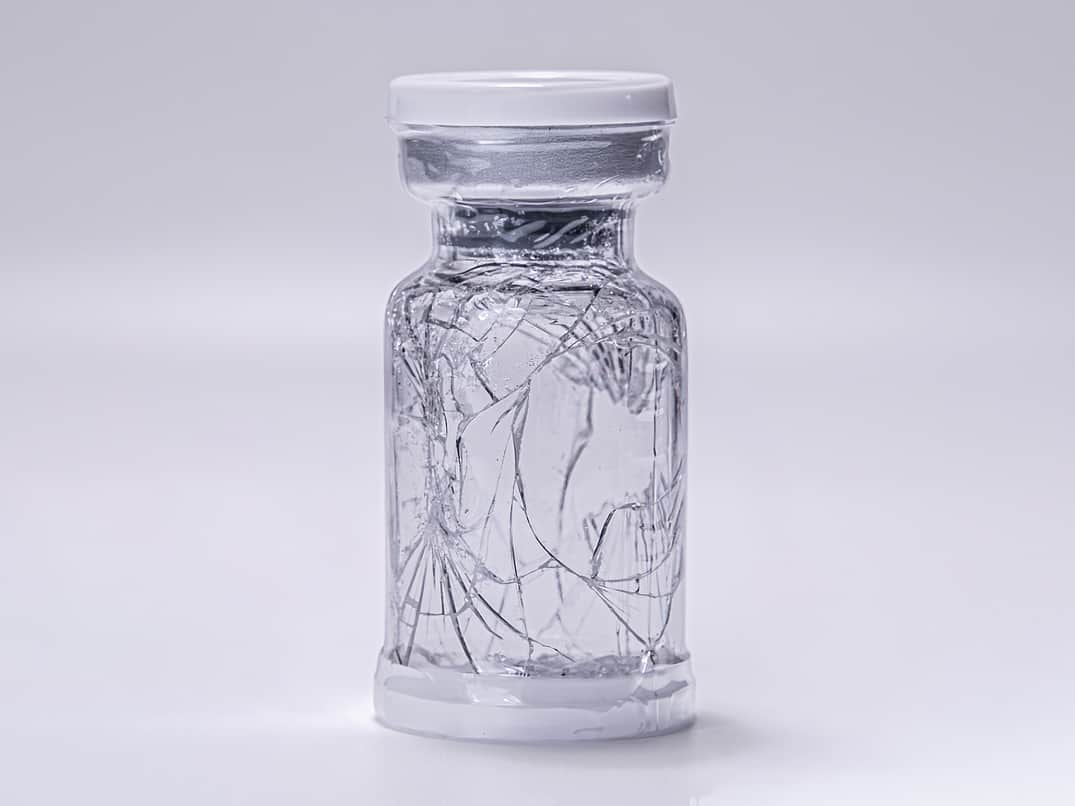From contamination risk mitigation to anti-counterfeiting, vial sleeves have a multitude of benefits. In this article we focus on safety.
What are vial sleeve preforms?
Sleeve Materials
Trusted by pharmaceutical companies across the globe, vial preforms wrap your vial in a film of protection. They can be produced in PVC or PET in thicknesses ranging from 50 to 70 µm. Transparent film is supplied as standard and offers excellent clarity to aid inspection of the vial contents, while opaque, UV blocking, and printed sleeves are available on request.
Cleanroom manufacture
Our protective vial sleeve preforms are manufactured by Adelphi partner Connexion Sleeve under class 8 cleanroom conditions in the Netherlands. They are supplied ‘pre-formed’ to fit your container perfectly, and can be shrunk onto your vial using a shrink tunnel after filling. A plastic base-cap is an optional extra for additional protection to the base of the vial.
What are the benefits of using a vial sleeve?
When deciding which vial sleeve is right for you, it is important to understand what your specific needs and challenges are. There are sleeves to suit various requirements, and here we are focusing on the subject of safety.
Safety benefits include:
- Protection against vial breakage
- Prevention of contamination from the outer walls of the vial
- Encapsulation of contents and broken glass in the unlikely event of breakage
Additional possibilities with our vial sleeves:
- Anti-counterfeiting solutions
- UV-blocking
- Opaque preforms for blind clinical trials
- Tamper evidence
- Securing an RFID chip to the vial
Protect your drug and your personnel
Protection from contamination
Even after washing, residual trace contamination can remain on the outer walls of a vial after filling with toxic or other harmful substances. Perhaps the most common concern addressed by vial sleeves is user safety.
To protect pharmaceutical staff and healthcare professionals in their duties whilst working with hazardous medicines, protective vial sleeves are applied to the vial post-filling and provide a barrier between the potentially contaminated outer walls of the vial and the handler.
Reducing the risk of vial breakage
While broken vials are always an inconvenience, they are thankfully rare, and would usually be identified well in advance of drug administration. However, in cases where the drug is not visible at the point of filling or administration (for example in nuclear medicine and PET scanning, where the vial remains sheathed in an outer container throughout), reducing the risk of breakage becomes very attractive. Vial sleeves can reduce the chance of broken glass when the vial is transferred into the outer container.
Encapsulation of the toxic substance
In the unlikely event a vial does break, harmful contents are contained within the sleeve, allowing for safe clean-up.
How are protective vial sleeves applied?
Shrink tunnel application
The vial sleeve is designed to fit your container perfectly after shrinking and is applied to the vial using a shrinking line which consists of a conveyor and a hot air tunnel. An operator places the vial onto the conveyor, after which it will pass through the heat tunnel, shrinking the preform securely onto the vial.
Need help sourcing a shrink tunnel? Contact our friendly team, and we will point you in the right direction.
Want to know more?
Talk to our friendly team about how Protective Vial Sleeves could improve safety in your processes.
Contact Us